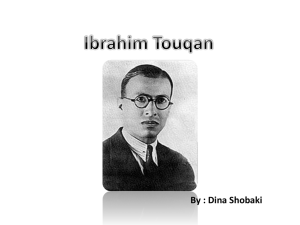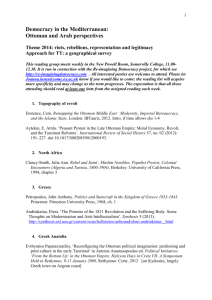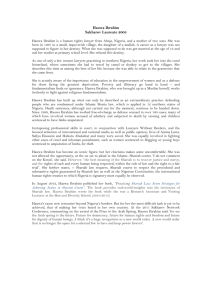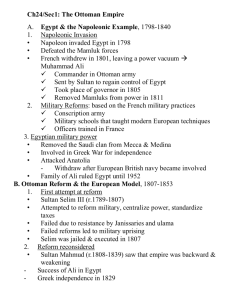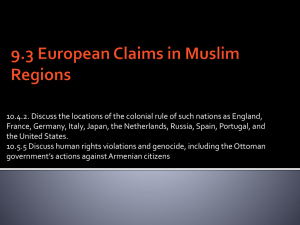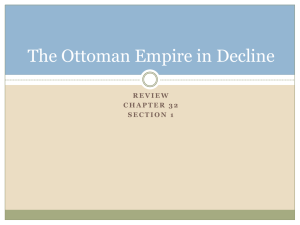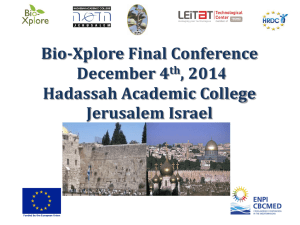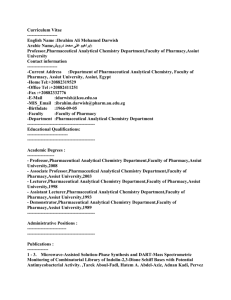Homines Novi - SFB 980 "Episteme in Bewegung"
advertisement
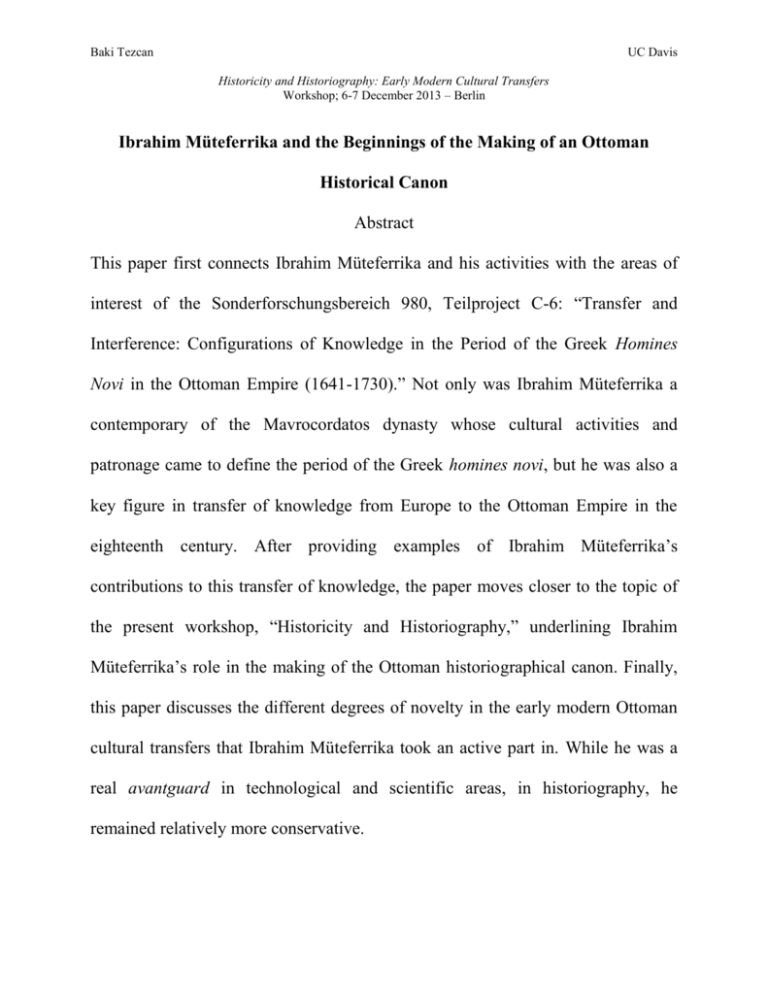
Baki Tezcan UC Davis Historicity and Historiography: Early Modern Cultural Transfers Workshop; 6-7 December 2013 – Berlin Ibrahim Müteferrika and the Beginnings of the Making of an Ottoman Historical Canon Abstract This paper first connects Ibrahim Müteferrika and his activities with the areas of interest of the Sonderforschungsbereich 980, Teilproject C-6: “Transfer and Interference: Configurations of Knowledge in the Period of the Greek Homines Novi in the Ottoman Empire (1641-1730).” Not only was Ibrahim Müteferrika a contemporary of the Mavrocordatos dynasty whose cultural activities and patronage came to define the period of the Greek homines novi, but he was also a key figure in transfer of knowledge from Europe to the Ottoman Empire in the eighteenth century. After providing examples of Ibrahim Müteferrika’s contributions to this transfer of knowledge, the paper moves closer to the topic of the present workshop, “Historicity and Historiography,” underlining Ibrahim Müteferrika’s role in the making of the Ottoman historiographical canon. Finally, this paper discusses the different degrees of novelty in the early modern Ottoman cultural transfers that Ibrahim Müteferrika took an active part in. While he was a real avantguard in technological and scientific areas, in historiography, he remained relatively more conservative. 2 Not only was Ibrahim Müteferrika contemporaneous with four members of the Mavrocordatos dynasty, but he was also working around similar circles with them while he translated for the Ottoman court and dealt with southeast European diplomacy. As for the role that Ibrahim Müteferrika played in transfer of knowledge from Europe to the Ottoman Empire in the eighteenth century, in the words of the late Niyazi Berkes: Ibrahim Müteferrika (1670?-1754 [sic.]) was, perhaps, the first of a series of Europeans who were destined to play a role in the history of the Westernization of Turkey as carriers of new ideas and as intermediaries between cultures. Ibrahim made an important contribution to the history of that process in which we are here interested. Ibrahim Müteferrika has a crucial role in Berkes’ The Development of Secularism in Turkey (1964). He appears in the first chapter entitled “Silhouette of a Renaissance” as the protagonist of the “First Innovation,” which is the printing press. There are too many studies on this printing press, and providing a long history of its foundation would be just to repeat what is already known. Instead, this paper focuses on a few of points to emphasize Ibrahim Müteferrika’s commitment to update the Ottomans on their scientific knowledge with the most recent developments in Europe. The first point I would like to emphasize is Ibrahim Müteferrika’s role in the dissemination of the heliocentric model in astronomy in the Ottoman Empire. It was Ibrahim Müteferrika who inserted this model into one of the books that he 3 published in his printing press and thus disseminated it much more widely in the Ottoman Empire. This book was Katib Çelebi’s Cihânnümâ, a geographical work based on Mercator’s Atlas Minor, that Ibrahim Müteferrika expanded, using, among other sources, the geographical study of Ebu Bekir bin Behram of Damascus. Other works of his in which he discussed the heliocentric model or updated the Ottoman world with scientific discoveries include his translation of Andreas Cellarius’ Harmonia macrocosmica the second edition of which was printed in Amsterdam in 1708; his edition of the History of the West Indies (Ta’rîkh-i Hind-i garbî), also known as the New Report (Hadîs-i nev), a geographical and historical study by the Ottoman geographer and jurist Su‘ûdî that is based on Italian translations of Spanish works on the Spanish colonization of the New World; and his translation and publication of the Füyûzât-ı mıknatısiyye, a short treatise on the beneficial uses of magnets, focusing specifically on the dipping needle, and how it could be used to show the longitude and latitude. Ibrahim Müteferrika’s historical publication are wide ranging, and his role in the establishment of the Ottoman historical canon is undeniable. Yet his historical publications do not include much that could be interpreted as transfer of knowledge, such as a history of Europe. In its last part, this paper argues that Ibrahim Müteferrika approaches the question of transfer of knowledge as a technocrat rather than a humanist. He identifies a political problem, the relative 4 weakness of the Ottoman Empire vis-à-vis Europe but looks for a technical solution for it: transfer of science and technology in militarily strategic areas.


